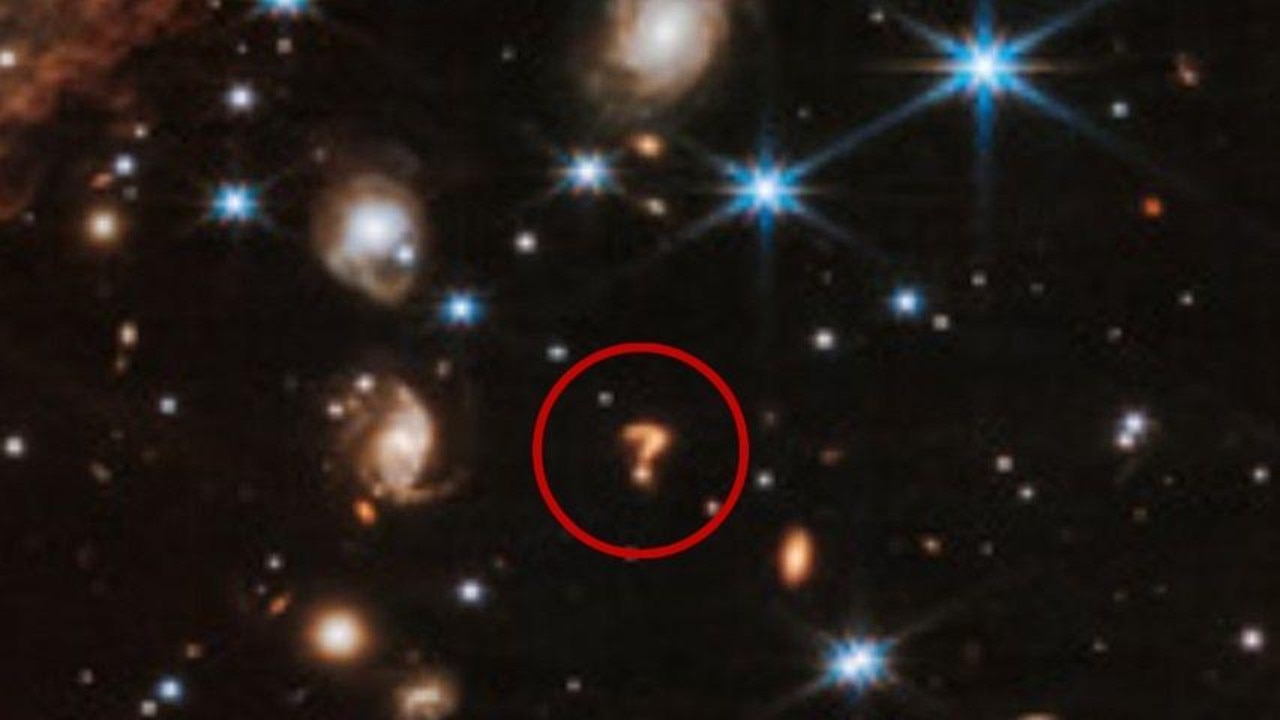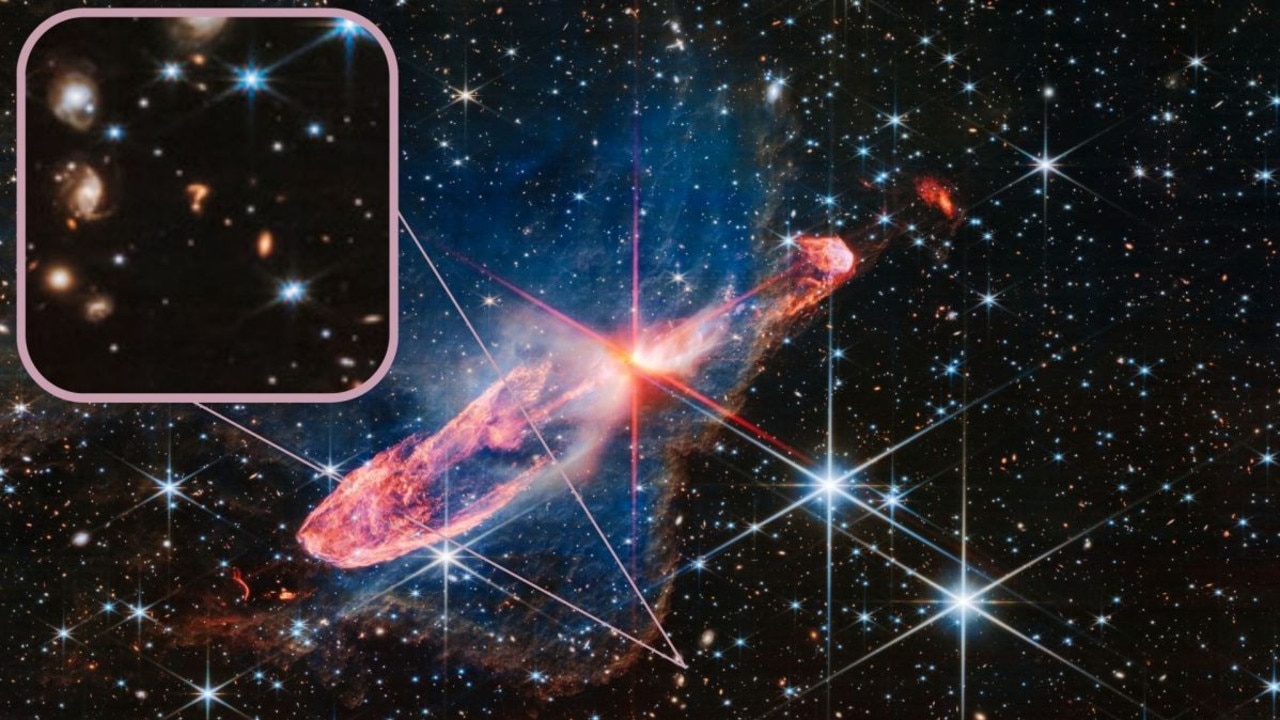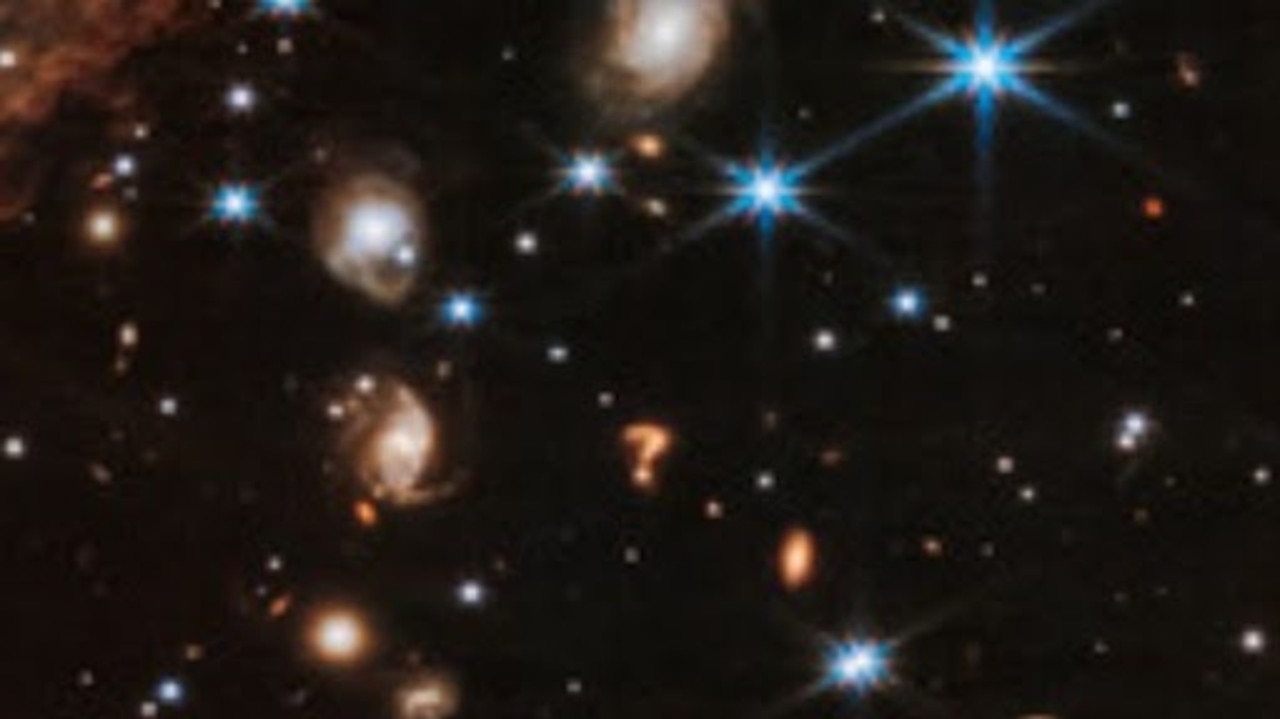Giant question mark spotted in space by James Webb Telescope
The James Webb Space Telescope has discovered a giant cosmic question mark in space that has baffled scientists.

The James Webb Space Telescope has discovered a giant cosmic question mark in space that has baffled scientists.
The team operating the telescope at the European Space Agency released an image on Wednesday that offered the most detailed look yet at two actively forming young stars located some 1470 light-years from Earth in the Vela Constellation.
The two dazzling stars, named Herbig-Haro 46/47, were seen surrounded by a disk of material that “feeds” them as they grow for millions of years.

But just below them, in the background of the stunning deep-space image, was an object that resembled a huge, red question mark suspended in the night sky.
It’s unclear what the strange object might be.
“It is probably a distant galaxy, or potentially interacting galaxies. Their interactions may have caused the distorted question mark-shape,” representatives of the Space Telescope Science Institute in Baltimore, which manages the telescope’s science operations, told Space.com.
The representatives said the objects’ red colour indicated that whatever the oject is, it is likely quite distant. It may even be the first time the object has been observed by humans.

The James Webb Telescope has incredible capabilities that can show objects at astonishing distances. Its high-resolution near-infra-red imaging allows it to peer into the far reaches of the universe, spotting galaxies as distant as 13.4 million light-years away that existed just 420 million years after the Big Bang.
“This may be the first time we’ve seen this particular object,” the representatives said.
“Additional follow-up would be required to figure out what it is with any certainty. Webb is showing us many new, distant galaxies, so there’s a lot of new science to be done!”
Matt Caplan, an assistant professor of physics at Illinois State University, told Space.com the object might be two galaxies merging.
“The two distinct features could easily be merging galaxies in the background, with the upper part of the question mark being part of a larger galaxy getting tidally disrupted,” Dr Caplan said.
“Given the colour of some of the other background galaxies, this doesn‘t seem like the worst explanation. Despite how chaotic mergers are, double lobed objects with curvy tails extending away from them are very typical.”






